#Da Vinci Magazine August 2020 Issue
Text
Mystery to Iu Nakare as Read by Experts: Interview with Sociologist, Noritoshi Furuichi
Translated from the Da Vinci magazine August 2020 issue.
Translation Notes:
1. The popular Japanese saying, "onna no shiawase" (a woman's happiness), carries a connotation implying that what makes a woman happiest is being primarily a loving homemaker. It suggests that her happiness lies in her success as a wife, helpmate, and mother.
~~~~~~~~~~~~~~~~~
What was your impression after reading Yumi Tamura's latest work, Mystery to Iu Nakare?
"What Totonou is unraveling is not a mystery case but a person's heart. He's more of a therapist than a detective," says Mr. Noritoshi Furuichi, who was impressed by the first story.
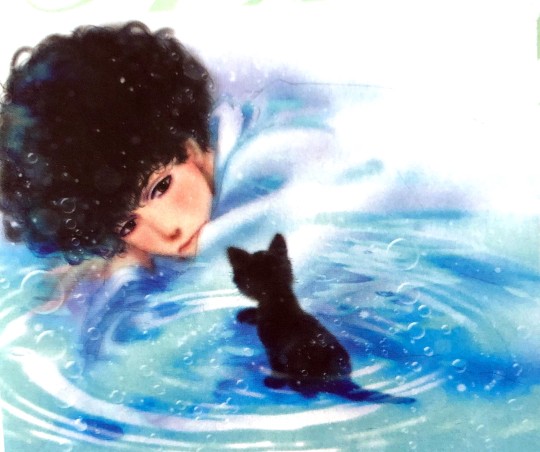
Totonou, who becomes a murder suspect, says the following during interrogation to the police sergeant who believes that "there is only one truth": "Getting caught up in something so ambiguous, like 'the truth,’ is what causes false accusations.”
Furuichi: "The stance taken by Totonou, who says that there are as many truths as there are people, and who tries to see the world in a flat way, is the core of this work as well as the antithesis of detective fiction. This is something I've always wondered, but most detective stories seem to end when the culprit is caught. But, merely revealing the facts doesn't solve anything. From the day the case closes and onward, the grief of the victims and the troubles of the perpetrators will continue. And that period of time is far much longer. The perspective that there’s no such thing as a single happy ending in reality is what makes this work so interesting."
Everyone who comes into contact with Totonou has their own beliefs and contradictions shattered. In the process, readers are also made aware of the things that have unconsciously bound them.
Furuichi: "I've been reading Tamura's works for a long time, including BASARA, but this one seems particularly tough on the "uncles." The old men who tend to believe that men go to work and women stay at home; who uphold a seniority-based hierarchy where they obey their superiors and give orders to their subordinates; and who put on airs just because of their titles. Through Totonou, this work casts a strong suspicious eye on those men. This specific line in volume 3 gave me quite a shock: "Don't fall for notions like 'a woman's happiness' [1.] either. Because they were probably made up by old men." This line points out that words accepted as truth in our society may actually be just prejudices that are convenient for someone else. However, the work achieves this kind of critique without being preachy. I think this is because the protagonist is always sincere with and serious about the people he faces. That's why all the people who meet him feel enabled to think for themselves and choose to change after being persuaded by his honesty. Totonou is actually very kind. He's usually not too involved with people, but when he realizes the crime by Garo, whom he grew fond of, he properly points it out. He doesn't turn a blind eye in order to be liked. Instead, once he's involved, Totonou continues to worry about Garo and tries to take responsibility for his actions. I believe being reasonable to yourself and to others will ultimately lead to kindness."
By the way, Mr. Furuichi, you naturally used some of Totonou's sayings as your own, but what part of him do you feel is similar to yourself?
Furuichi: "I've had friends say that to me, but I'm not so sure... (laughs). But I guess we're similar in that I do question a lot of things and end up offending someone. I just think it's important to ask, 'really?,' like Totonou, and question the existing state of things. In this society, there is a lot of common sense that makes no sense and customs that are no longer useful. They will continue to exist until someone calls them out. In order to improve and make society more open-minded, we need someone to intervene and question. I wish more people had a Totonou within them. Though more arguments and conflicts would probably arise here and there."
#Mystery to Iunakare#Don’t Call It Mystery#Do Not Say Mystery#Yumi Tamura#Tamura Yumi#Da Vinci Magazine August 2020 Issue#Noritoshi Furuichi#unofficial translations
81 notes
·
View notes
Text
Ghost Hunt News: Paperback Novel Volume 3! (And other news)
Kadokawa’s official Ghost Hunt site updated with more news!
1) The cover for the paperback edition of the 3rd novel has been revealed! It will go on sale September 24, 2020.

2) There is going to be a raffle for people who bought the first two volumes. The prize: Volumes 1 & 2 autographed by Fuyumi Ono! You can enter by submitting a picture of your receipt to the Kadokawa app or sending in the tickets (found on the wrapper of the novels) taped to a postcard. This will probably only be available to fans living in Japan. ^^;
3) Voice actress Ayana Taketatsu will be performing a documentary style commercial for the Ghost Hunt novels that will be broadcast on both terrestrial and internet radio! Ayana Taketatsu is a big Ghost Hunt fan herself and recorded this in a supposedly haunted studio, lol. (I don’t know if overseas fans will be able to listen to this at all, but I’ll keep an eye out.)
4) There will be Ghost Hunt articles featured in two magazines:
Da Vinci September 2020 Issue has a new illustration of Naru & Mai by the cover illustrator of the paperback editions, a few interviews, character popularity rankings, and fan casting for a potential live action adaptation. (I have a copy of this and will make another post about it later. For now, here’s a picture of the new illustration!)
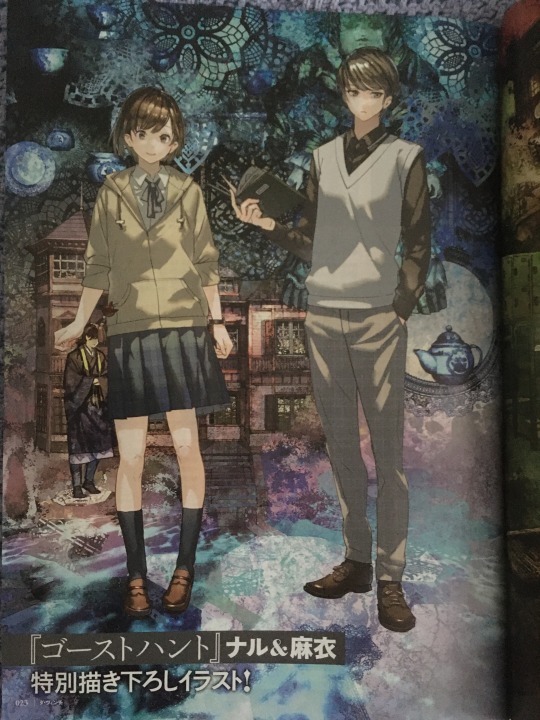
Kai to Yuu vol.005 will have an introduction to the Ghost Hunt series, character popularity rankings, and an essay by Shiho Inada & mystery writer Mizuki Tsujimura titled “Ghost Hunt and I.” This will go on sale August 31, 2020.
So much stuff!!! Seeing this much attention brought to the series again makes me really happy. ;__;
107 notes
·
View notes
Text
11: Your Bibliographic Research
I am delighted to complete the essay title. Now, I found all the papers based on the essay title "How can an artistic point of view aid the technical development of contemporary architecture and interior design?" It is the last Critical and Cultural Studies L6: Degree Essay/Report for my university bachelor.
I have an outline and planning of the essay. Fig. 1 According to the early research on art and construction technology, the column design in Greek and Rome already contains artistic and structural elements. The column design in Rome is the main of architectural structures, and the column is full of decorative forms.
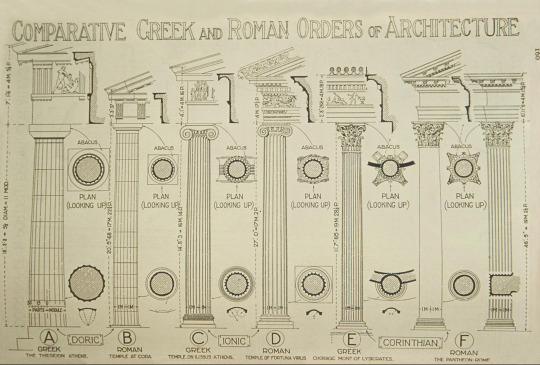
Fig. 1 Columns: Orders: Greek And Roman Comparison.
This situation also occurred during the Renaissance, such as Leonardo's original mechanical structure drawings; it inspires the combination of science, art and design. Fig.2 According to the THINK LIKE DA VINCI - 500TH ANNIVERSARY EXHIBITION, Leonardo's artists conceived this structure from an artistic point of view.
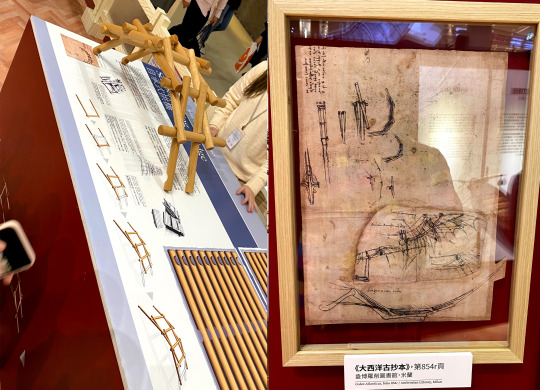
Fig.2 My own work - DA VINCI's structure creation and drawing
Besides, Gothic the architecture and interior design of the church is decorated with some sculptures, these images are symbols of power.
Interestingly, the result of my research is that symbolic architecture and interior design in the world relates to force and value. It is not difficult to find that many countries hope to have this symbolic architecture and interior design as value and symbols of power.
Contemporary architects use artistic viewpoints as their initial inspiration, then carry out detailed designs and research, and attract investors. And then they will Develop or find various new technologies or finding material to help them design and build.
The above introduction can define that designers from Roman times to modern times use artistic thinking to stimulate creativity. The above information is only an introduction that explains the relationship between art and technology. I will focus on "How can an artistic point of view aid the technical development of contemporary architecture and interior design?" and will writing and analysis based on the essay title.
The following are the results of my 15 resource research.
REFERENCES:
1: Dean P., n.d. Practice Nouveau. [ebook] University of Illinois at Chicago. Available at: <https://iopscience.iop.org/article/10.1088/1757-899X/603/2/022014/pdf> [Accessed 6 July 2020].
2: Cardellicchio Kent, L., 2018. On conservation issues of contemporary architecture: The technical design development and the ageing process of the Jubilee Church in Rome by Richard Meier [ebook] keai publishing, p.108, p.110 Available at: <https://www-sciencedirect-com.ezproxy.herts.ac.uk/science/article/pii/S2095263518300165?via%3Dihub> [Accessed 8 July 2020].
3: Glen, S., 1998. Passion &Precision: Frank Gehry Does Not See Himself As An Architect Creating Buildings, He Creates Sculptures. [ebook] Canada, Toronto: IQ Business Media, p.1. Available at: <https://search.proquest.com/docview/210830490?accountid=14660> [Accessed 2 July 2020].
4: AbdUllah, A., Bin Said, I. and Ossen, D., 2013. Zaha Hadid’S Techniques Of Architectural Form-Making. [ebook] Sciknow Publications Ltd., p.4. Available at:
<https://www.researchgate.net/profile/Amatalraof_Abdullah3/publication/304552915_Zaha_Hadid's_Techniques_of_Architectural_Form-Making/lin
ks/5e41616f458515072d8f8e6d/Zaha-Hadids-Techniques-of-Architectural-Form-Making.pdf> [Accessed 27 June 2020].
5: Stephens, A., 2019. Additive Manufacture: Structural Freedom & Architectural Complexity. [ebook] The Sir Ian Dixon Scholarship, p.20. Available at:
<http://constructorscompany.org.uk/wp-content/uploads/2019/11/SIDS-2017-18-Report-Alexander-Stephens.pdf> [Accessed 6 July 2020].
6: Lee, L., n.d. Exploded Cinema. [ebook] Contract Magazine, pp.80-83. Available at: <http://web.b.ebscohost.com.ezproxy.herts.ac.uk/ehost/pdfviewer/pdfviewer?vid=1&sid=d81d759b-776a-459a-9693-78503c2edd34%40pdc-v-sessmgr02> [Accessed 24 July 2020].
7: Boland, R., Collopy, F., Lyytinen, K. and Yoo, Y., 2018. Managing as Designing: Lessons for Organization Leaders from the Design Practice of Frank O. Gehry [ebook] Massachusetts Institute of Technology. Available at: <https://www.mitpressjournals.org/doi/pdf/10.1162/desi.2008.24.1.10> [Accessed 6 July 2020].
8: Good, R., 2015. From Paper To Digital Space: The Geometry Of Construction At Gehry’S Weisman Art Museum And Expansion. 19th ed. [ebook] Cambridge University Press, pp.73-86. Available at: <https://search-proquest-com.ezproxy.herts.ac.uk/docview/1687957389?accountid=14660&pq-origsite=summon> [Accessed 1 August 2020].
9: Mertins, D., 2006. The Modernity Of Zaha Hadid. [ebook] University of Pennsylvania School of Design's Department of Architecture., pp.3-8. Available at: <https://repository.upenn.edu/cgi/viewcontent.cgi?article=1007&context=arch_papers> [Accessed 1 August 2020].
10: Tina, D., 2013. Same Différance. [ebook] New York: Artforum International, pp.1-4. Available at: <https://search.proquest.com/docview/1462494045?accountid=14660> [Accessed 8 July 2020].
11: Hassanein, H., 2020. Utilization Of “Multiple Kinetic Technology KT” In Interior Architecture Design As Concept Of Futuristic Innovation. [ebook] Turkey: David Pubishing, pp.1-22. Available at: <https://press.ierek.com/index.php/ARChive/article/downloadSuppFile/370/123> [Accessed 1 August 2020].
12: Tubielewicz-Michalczuk, M., 2019. Fences Application Of The CATIA Program In Architecture And Construction. [ebook] Poland: IOP Publishing Ltd, pp.2-7. Available at: <https://iopscience.iop.org/article/10.1088/1757-899X/603/2/022014> [Accessed 1 August 2020].
13: Lisa, T., 2007. Frank Stella: Painting Into Architecture. [ebook] New York: Artforum International. Available at: <https://search.proquest.com/docview/214342419?accountid=14660> [Accessed 1 August 2020]
14: Ihde, D., 2020. From da Vinci to CAD and Beyond [online] New York: no j Springer. Available at: <https://www-jstor-org.ezproxy.herts.ac.uk/stable/40271258?pq-origsite=summon&seq=15#metadata_info_tab_contents> [Accessed 1 August 2020].
15: M. Reeve, M., 2013. The Capital Sculpture Ofwells Cathedral: Masons, Patrons And The Margins Of English Gothic Architecture. 1st ed. [ebook] UK: Journal of the British Archaeological Association, pp.72-109. Available at: <https://www-tandfonline-com.ezproxy.herts.ac.uk/doi/pdf/10.1179/174767010x12747977921047?needAccess=true> [Accessed 2 August 2020].
IMAGE REFERENCES:
Fig. 1 Fig.1 - Designers own work, (14.12.19), DA VINCI's structure creation and drawing
Fig. 2: Artstor (n.d.) Columns: Orders: Greek And Roman Comparison. [Online Image] Available at: <https://library-artstor-org.ezproxy.herts.ac.uk/#/asset/ARTSTOR_103_41822003592738> [Accessed 1 August 2020].
Fig. 3: Rhodes College, 2011. Temple Of Olympian Zeus And The Acropolis. [image] Available at: <http://hdl.handle.net/10267/22450> [Accessed 6 August 2020].
0 notes
Text
Fate/Grand Order Anime Film's 1st Part Gets New Release Date of December 5, 2020
The official website for the upcoming two-part anime film Fate/Grand Order - Divine Realm of the Round Table: Camelot has announced that its first part -Wandering; Agateram- is newly set to be released in Japan on December 2, 2020. The film was originally set for a release on August 15 but has been postponed due to the COVID-19 pandemic.
Also as reported, Maaya Sakamoto, who is cast as Leonardo da Vinci, performs the theme song "Dokuhaku" (Monologue) for the first part. She and Mamoru Miyano, the voice of the protagonist Bedivere, will appear on the cover of the next September 2020 issue of KADOKAWA's monthly literature magazine DA VINCI. The film will be featured in the issue to be released on August 6, including the two's first conversation interview in their career.
"DA VINCI" September 2020 issue cover:
In addition, ANIPLEX+-limited advance tickets with acryl mascot figures go on sale at 3,000 yen (about 28.35 US dollars) from today, August 1. The six-type limited edition tickets will be available until August 31.
【前編公開日決定】
公開延期を発表しておりました前編「Wandering; Agateram」の劇場公開が12月5日(土)に決定いたしました。
8月6日発売の雑誌「ダ・ヴィンチ9月号」では特集記事を掲載。表紙を宮野真守さん・坂本真綾さんが飾ります。
是非ご覧ください。#FGO #FGO_ep6 #キャメロット pic.twitter.com/FJsIDleZGh
— 劇場版 Fate/Grand Order -神聖円卓領域キャメロット- (@FGOAP_ep6) August 1, 2020
Source: Aniplex press release
©TYPE-MOON / FGO6 ANIME PROJECT
0 notes
Text
Yumi Tamura Long Interview from Da Vinci August 2020 Issue
Basic translations of the long interview with mangaka Yumi Tamura published in the Da Vinci magazine August 2020 issue. Translation notes appear at the end and correspond with the numbers enclosed in brackets that appear in the body of the post.
<<SPOILER ALERT to anyone who hasn't finished BASARA, and possibly 7SEEDS (though nothing major) if you haven't reached Volume 10/11, specifically the Ash chapter arc on Ryugu Shelter.>>
-----------------------------------
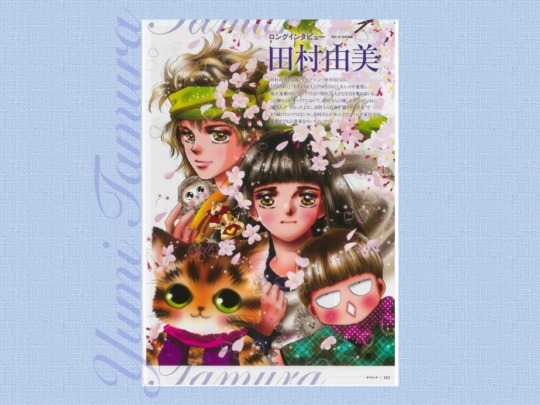
This year marks the 38th anniversary of Yumi Tamura's debut.
Tomoe ga Yuku!, BASARA, and 7SEEDS are big hit series, and her current serialization, Mystery to Iu Nakare, is also attracting a great deal of attention. Throughout her illustrious career, just as her portrayed protagonists have always been "fighting people," she herself has always been a "fighting manga artist.” This is a precious long interview with Tamura that reveals the path she has taken as a manga artist!
The Budding Worldview Begins in a Manga Club
Yumi Tamura opened the door to the world of manga when she was in junior high and high school. It was during this time that she first made many friends who drew manga together.
“I formed a manga club. We weren’t allowed to have a manga club at my school, so I formed an independent one with kids from other schools. After school, we would gather at the house of a member and draw various things. But it's not like we were making proper manuscripts yet at that time. It was more like relay manga [1.], where we would draw with pencils in a notebook. We also made photocopy zines and went to events to sell them. I liked horror and suspense [genres], and now that I think about it, ensemble dramas [2.]. I was creating a single world and putting various characters in it, each with their own story. It was like playing with worlds and characters.”
It was in this manga club that Tamura began walking the path of becoming a professional. In high school, her friends told her they wanted to become manga artists, and in her sophomore year, Tamura, too, finished her first real manuscript and submitted it to Bessatsu Shoujo Comic. It was selected as an honorable mention for the monthly award, and an editor was already assigned to her after her second submission.
“A career as manga artist finally became a reality at this point. When I was deciding on a career path, I thought to myself that I didn’t want to draw manga only as a side job, so I had no choice but to become a manga artist. I entered a design school in Tokyo and worked as an assistant here and there while aiming to make my debut.”
I wanted to draw a hard-boiled suspense with a male protagonist.
For Tamura, the manga club was not only the beginning, but also an important place where the foundation of her career as a manga artist formed.
“The person who influenced me the most in becoming a manga artist was a friend of mine from the manga club. She was a very unique person and a good artist. She would draw pictures of an old Black man playing musical instruments in color. She would also draw stories about the environment from the perspective of a wolf. Seeing her, I realized that I’d be in trouble if I couldn’t draw men and women of all ages too. I started practicing drawing animals, mechanical objects, and with colors. As many of the contributors often say, you should put yourself in an environment where there are people who are clearly better than you. You'll definitely learn a lot that way. If I hadn't met that friend, I don't think I would have become a manga artist.”
Friction Between One's Own Worldview and the Required Worldview
However, after moving to Tokyo, Tamura continued her work in anguish for a brief period. She struggled with the friction between her own view of the world and the so-called shoujo-manga-like worldview.
“I wanted to create a hard-boiled type of story with a male protagonist and with a sense of suspense. But I assumed I couldn't do that for a 32-page piece, so I ended up not knowing what to actually draw for submission. After about two years, I decided that I couldn’t continue this way, so I finally started drawing what I wanted to draw. That was my debut work, Ore-tachi no Zettai Jikan.”

[Image caption: This is Billy, who could be called Tamura’s own fighting game character that she would choose to play. The actions of this rookie newspaper reporter are dazzling! (From Ore-tachi no Zettai Jikan)]
This work won an honorable mention in the Shogakukan Newcomer Comic Award, and was published in an additional issue of Bessatsu Shoujo Comic in 1983. The story begins when Billy, a rookie newspaper reporter, meets a mysterious man who is carrying a dead girl's body.
“Billy is one of the characters in the world that I was creating back in my manga club days. I tried to draw him the way I would like my own selected character [in a fighting video game]. I submitted the work without even showing it to my editor.”
In the 1980s, shoujo manga was in its golden age of school romantic comedies. It could be said that Tamura had begun acquiring her own unique style since the time of her debut.
“It's true that I'm often told that my work is not limited to the boundaries of shoujo manga. But I've never thought of shoujo manga as having any boundaries, and I naturally believe that it has a wide range where anything can be done. I mean I've been reading such stories for a long time. From the perspective of an otaku of my generation, the school romantic comedy genre that everyone often thinks of [and associates with shoujo] is something that came along relatively later.”
However, even after her debut, Tamura still ran into a wall with the worldview requested by the [Bessatsu Shoujo Comic] magazine. Her first serialization was Chotto Eiyuu (Hiirou) shite Mitai. It's a story about a high school girl who plays tennis.
“The person in charge told me that the main character needed to be a girl; that a mystery/suspense was not allowed; that since it’s action, it should be about sports. And that’s how the setting came to be. But because of that, this is a pretty heavy and somewhat bitter memory for me.”
Wanting a Protagonist Who Fights Alongside Men on Equal Footing
The first breakthrough in Tamura’s career came in 1987 with the serialization of Tomoe ga Yuku!. The main character is Tomoe, a delinquent girl who formerly rode roller skates down freeways. She meets Iori, the heir of a business conglomerate, and together they fight to protect him against various threats. With this work, Tamura solidified her position as a popular manga artist. But above all, Tomoe established the heroine image of the "fighting shoujo [girl]" that came to symbolize Tamura's work.
“Tomoe is by no means a strong girl. She is troubled by her own weakness, but she earnestly tries her best to be strong. In Tomoe, for the first time, I put in my own thoughts and problems that I’ve been carrying--the weaknesses, complexes, and worries I had inside me. Though I don't know if that’s an appropriate form for creative work like manga. I'm not a strong person at all, so I tried my best during this time in hopes of becoming strong too. Tomoe runs while crying. I was very happy that readers could relate to that. For the first time in this work, I thought it was fun to have a girl as the protagonist.”
“Thank you for loving me, I will make you happy too.”
We asked once more: In the end, isn't the so-called normal girl, a girl who is loved by a prince-like boy and becomes happy, the kind of protagonist that Tamura should be portraying?
“Of course, I want the protagonist to be loved and happy. But there's a part of me that thinks that she can't really be happy in the way you describe. She’s not an equal [to her partner] somehow, and I feel like sooner or later she’ll be looked down upon or despised as long as that remains the case. It's tiring to be at the mercy of others. For example, even if I do feel loved, I don't want to just be patted on the head; I want to pat your head in return as well. I want to be treated as an equal human being. Thus, I want her to be a girl who says, ‘Thank you for loving me, I will make you happy too.’ For some reason, this kind of awareness has always been with me. When I was a child, I loved tokusatsu [3.] and anime, especially the ones where the lone woman in a group plays the same active role as the men. For example, Françoise Arnoul in Cyborg 009 and Yōko Nogiwa in Key Hunter, though it’s a drama.”
Tomoe was also taken from Tomoe Gozen [4.].
“Tomoe Gozen is said to have charged alongside Kiso Yoshinaka [5.] on the battlefield. I very much admire that kind of relationship. I don't want to simply be told, ‘I'll protect you, so stay back.’ I want to fight together, hand in hand, raising each other up. Well, that's the ideal, but...I know it's difficult to achieve.”
The Idea for Sarasa Came from an Egyptian Queen Who Dressed Like a Man
In 1990, the same year that the serialization of Tomoe ga Yuku! ended, Tamura started serializing BASARA. Including the Gaiden [appendix; side story], the series ran until 1999 and won the 38th Shogakukan Manga Award. This is Tamura's legendary masterpiece that is still loved by many fans. The story takes place in Japan several hundred years after the collapse of civilization. Sarasa, a girl born in the village of Byakko, takes the place of her murdered twin brother, Tatara, and grows up to become the leader of a revolutionary army to save the people suffering under the king's oppressive rule.
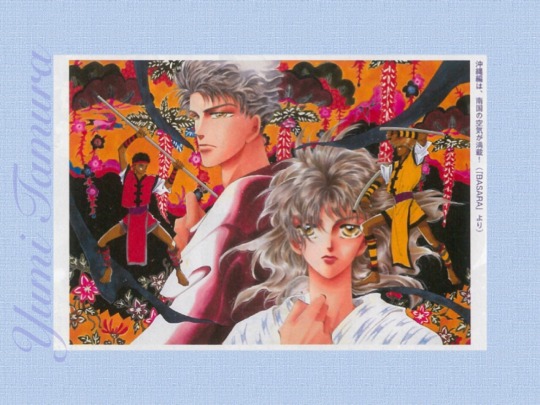
[Image caption: This Okinawa edition is full of tropical flair! (From BASARA)]
“The idea started with a trip to Egypt. There, I learned about the female king, Hatshepsut, who ruled as a pharaoh while dressed as a man, and so I thought it would also be great to have a story about a girl fighting in the disguise of a man. There were already a lot of Egyptian-based stories, so I decided to make a Japanese one, but I thought it would be difficult to portray an actual historical figure since my mind would be wrapped up in historical facts. Thus, it became a fictional war story set in future Japan.”
One of the major attractions of BASARA is the fictional setting of the war. Centered on the imperial capital, Kyoto, Japan is divided into four provinces ruled by the Black King, the Blue King, the White King, and the Red King. There’s a large temple in Kumano and a prison, Abashiri, in the far north. Okinawa is an independent country with a presidential system. It is a world that is slightly connected to the real Japan, yet far more original.
“As usual, I kind of started before really deciding on the detailed setting. I immediately got stuck on what to do next (laughs), but I finally grasped the general idea of how to proceed around the time I put out the Kanmon Tunnel chapters. I realized then that this was indeed going to be a story about Sarasa’s journey around the actual islands of Japan. I guess this was partly due to the influence of role-playing games [6.]. So, as she travels around like that, some real places, such as Sakurajima, appear in the story, while there are other places that have completely changed. I tried to mix in settings that overlap a bit with historical facts and folklore, among trying other things, so it was a lot of fun to create.”
Not Wanting Just Strength; Kindness is Also Necessary
The heart of the story in BASARA is Sarasa’s internal conflict and love. While leading the Tatara army, Sarasa continues to question herself. “Why do I kill people on the battlefield when I want to create a country where people are not killed?” She also then falls deeply in love with the Red King, Shuri, not realizing that he is her own enemy. Sarasa, like Tomoe, is a "fighting girl," but she anguishes and struggles the more deeply she fights and loves.
“Sarasa is also a girl who knows she is weak and keeps struggling to be strong. But in the latter half of the story, she realizes that it’s not enough. Strength alone is not enough; you have to be kind.”
Sarasa reflects: “I thought all I wanted was strength, but every time I come in contact with someone's kindness, I wish I could be kind like them too, I wish I could be even more so; not just strong like Byakko.”
Tamura continues:
“Sarasa is not solely trying to be her brother, Tatara, nor a beautiful woman dressed as a man. She actually loved and lived as a girl. From the beginning of the story to the end, the protagonist has been extremely conscious of the fact that she is a girl. This was a work in which I myself kept thinking about what it meant be a girl.”
After fulfilling her goal of overthrowing the kingdom, Sarasa does not become the head of the new country. She, along with Shuri, disappears from everyone's sight. In the Gaiden, it is mentioned that they crossed over to Europe and established a company called Green Shokai [Green Trading Company].
“I had trouble with the conclusion through the very end. There is still a part of me that doesn't know if them leaving the country was a good choice or not. Maybe Sarasa should have ruled the country. But then, she would have never been able to be with Shuri. I was also very worried about whether or not Sarasa could really forgive Shuri, or if she should. In fact, my editor at one point told me that the two of them should die. But I didn't want to do that. I believed they should live on because they had persevered through so much and fought so hard all that time to be happy. If it had been a short story, I think the ending would have been different. But for this story, it's more meaningful for them to live than to gloriously die a noble death, and even if it's hard, the two of them should bear the burden of their responsibility. The readers called it a job change (laughs), but it’s another way of supporting their country as merchants. In the end, that's how their future together turned out.”
7SEEDS is a School Drama
Tamura's writing prowess continued to grow. In 2001 following BASARA, she launched her other masterpiece, 7SEEDS. The series ran for 16 years and won the Shogakukan Manga Award as well. In the story, five teams of seven people each—Team Spring, Summer A, Summer B, Autumn, and Winter—are put under cryogenic sleep and awaken in the future after the extinction of the human race.
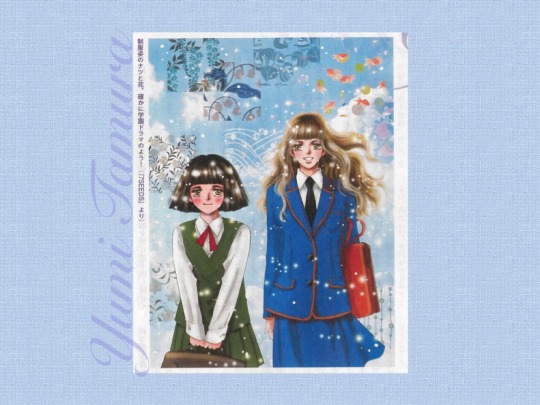
[Image caption: Natsu and Hana in their school uniforms. It certainly looks like a school drama! (From 7SEEDS)]
“Again, I started this one in a hurry before I could really decide on anything (laughs), so I had a rather rough time until about volume 6. I wanted to take a good break for a moment, but it was hard to get one. But then in the chapter arc about Team Summer A at the institute, the story came to me all at once, right up to the final selection test. That was when I remembered the sensation of ‘manga is fun!’ for the first time in a long time.”
Even though the setup can be seen as a future survival story, 7SEEDS is a human drama all the way through.
“In my opinion, this work is a school drama. I'm not very good at school stories, so I've rarely written them, but here, there are only boys and girls of about high school-age, and they live together. In the end, it's not a survival know-how story, and of course it's not science fiction; it's a story about how people interact with each other and how they go on living.”
Natsu, who was bullied; Hana and Arashi, who were lovers; Aramaki, a former high school baseball player; and Ango, who carries trauma from his time at the institution. This is the ultimate ensemble drama, with each character having a life of their own to the point where it can be said that all the characters play a leading role.
"Whenever I draw manga, I always think that the supporting characters are not living for the sake of the main character. All of them are living for their own happiness. And it’s when they collide and overlap with each other that the story forms. Also, as is the case with BASARA, even if the young people are the main characters, it’s necessary to depict an adult society in the background—the ideas, expectations, and interests of adults. Only then can that world become one, but that’s the most challenging part.”
There is one chapter arc in 7SEEDS that Tamura herself loves. It's the "Ryugu" shelter, which portrays the time when humanity is on the verge of extinction.
“It seems that many readers are reminded of Ryugu shelter now with the occurrence of Corona [COVID-19 pandemic].”
In the Ryugu shelter, a singer, comedian, ramen chef, dairy farmer, and manga artist all fulfill their professional duties up until the moment of their deaths.
“What would we do if the end of humankind became a reality? I figured that in the end we would do the same thing as they did.”
Dissatisfaction with Gladiator is the Inspiration for Toraji?
One of the most notable aspects of Tamura's career is that while drawing long-running big hits without interruption since the time of Tomoe ga Yuku!, she has been constantly releasing new serialized work and one-shot short stories to the world. When BASARA was in serialization, she created a number of masterpieces, including the Ryuzaburou series featuring a 10-year-old boy, Kinezukan in which a group of senior citizens play an active role, and the horror work 4nin no Onna. And since the start of 7SEEDS, she has started two other series, Neko Mix Genkitan Toraji and Iromen—Juunin Toiro—.
Toraji is a fantasy story set in a world where humans and mice are at war with each other. Hero Pai’yan together along with half-human (mix) cat, Toraji, is searching for his son, who was kidnapped by the Magic Mouse. In Iromen, Aoki, Akagi, Midorikawa, and other men and women with colors in their names fixate on colors and engage in discussions over them at a company.
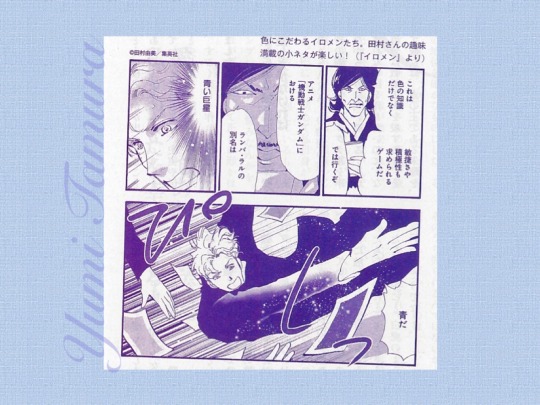
[Image caption: Color-obsessed Iromen [7.]. Tamura’s hobby-filled pieces of tidbits and jokes are entertaining! (From Iromen)]
“The times when I’m in good form are probably when I'm able to work simultaneously on things with slightly different flavors, such as a serious story for the main magazine and a comedy for another. Toraji was inspired by the movie Gladiator. At the beginning of the movie, the main character, a Roman army general, finds his wife and child murdered while he was away in battle. Consequently, the story is about that man fighting as a gladiator for revenge, and of course it’s a magnificent movie, but there was something that made me pause. His wife and child become a very beautiful memory for him; however, he was always away at war and basically neglected them. Isn’t it possible that they hated [him] or was angry with [him]? They weren’t dolls, they were human beings who had feelings and thought about things. But the main character doesn’t think about that even for a minute. I was a little dissatisfied with that, and thus, decided to create Toraji. That’s why Toraji is a story about a son and mother who wants to say to their neglectful father, ‘We are living people too.’”
On the other hand, as for Iromen ...
“It’s like a compilation of myself (laughs). Because I put in real life works like tokusatsu and anime, along with other real products; in other words, I included all the things I like. Moreover, since it was the first time in a long time that I was depicting the present-day real world, it was actually serving as a stepping stone to Mystery to Iu Nakare. After I started the Iromen series, I wrote down notes of proverbs, famous quotes, and anything related to colors. I’ve utilized colors [words, phrases, titles, names, etc.] in BASARA as well. I don’t know much about poetry or literature, but maybe I’m interested in words themselves—in the history of specific words and kanji. I feel like that fixation is gradually showing in my manga.”
Totonou’s Discussions are Something that I’ve Been Thinking About for a Long Time
Mystery to Iu Nakare, which is currently in serialization, also began as a one-shot that was drawn during the same time as 7SEEDS.
“To tell the truth, I had already decided on a different story for the new series. I’ve been wanting to do something a bit like an omnibus for a long time. But fortunately, I received great responses to the Mystery one-shot, so I decided to make it a series.”
Mystery to Iu Nakare has acquired a readership that extends beyond traditional manga fans, and last year it ranked second in the Kono Manga ga Sugoi! 2019 Onna Hen [Kono Manga ga Sugoi! 2019 ranking for female readers] and the Manga Taisho 2019 award list. It is no exaggeration to say that it is one of the hottest manga right now. Perhaps the secret of its popularity stems from the fact that Mystery is packed with everything Tamura has ever done. For example, the main character is a university student named Totonou Kunou. Although he takes on the role of a detective, his true value lies not so much in solving mysteries, but rather, in his sincere point of view on the essence of society and people. He never stays silent when he thinks something is wrong. His inability to read the atmosphere and his reluctance to give up also make him a certain kind of “difficult person.” And Tamura has portrayed many undoubtedly “difficult people” in her works thus far.
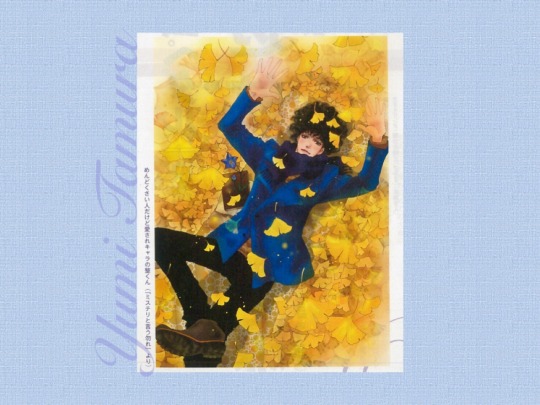
[Image caption: Totonou, who is a difficult type of person, yet a beloved character. (From Mystery to Iu Nakare)]
“I’m the type of person who cannot speak up clearly even when frustrated, so maybe I admire people who don’t keep quiet. People who can think things through and put them into words. Like, ‘I’m not so sure that's the case’ to ‘I think this is wrong.’”
What strongly attracts readers is the numerous words from Totonou, who never remains silent. The gender inequality that still exists in society, the burden placed on mothers in raising children, what it means to love a child, and why it is wrong to kill people… for each of these topics, he gives his own well-thought-out response, addressing them to the people around him as well as to the readers.
“Originally, I didn't start this work with the intention of making it into a mystery, but rather, I was thinking of making it so that Totonou is just there having a conversation while the case is being solved on the side. I wasn’t thinking that he himself would be solving the case. That’s why I titled it with ‘Iu Nakare’ [‘Don’t Say It’ (is a Mystery)], and why the main focus is on his commentary. Everything he says is actually something I've always wondered and kept thinking about. Or, they’re unexpected facts that I learned, or something that surprised me. So, the questions and answers within me at the present moment have become Totonou’s words. Normally, it's not allowed in manga to include the author's thoughts or opinions as they are. However, since Mystery was a one-shot, I thought I’d experiment a bit.”
Among other aspects, Totonou’s strict “No” stance on gender inequality has garnered a great deal of attention.
“Of course, it's not that I want to talk about gender in particular. However, I want to depict what I can now about it too. I think the structure of the world as it exists today is something that was mostly constructed by a small portion of men. Languages, ideas, and systems of the world. Based on said men’s judgment and convenience at that time. That structure is passed down through generations as the natural order of things. I think it’s awfully difficult for women to live as equals with men in a world created in this way. It’s like a pentagon not fitting into a world that’s made for a triangle. In order to make life better for women, I think women need to be involved in the creation of things from the very beginning.”
In that moment, I firmly vowed in my heart: ‘I will become a manga artist!’
Tamura said that an old friend of hers recently pointed out that among all her main characters thus far, Totonou is the closest to Tamura herself. Tomoe, who wished to be strong so that she could fight alongside men; Sarasa, who found kindness before strength; and Totonou, who never averts his eyes from the true nature of society. It can be said that Tamura is a manga artist who is constantly thinking, and her manga is what derives from that. Well, to find out where that driving force to keep on thinking comes from, we finally asked her about it.
"Hmm, a driving force… it starts with the thought of ‘I want to draw this,’ or ‘This would be fun to draw,’ so it normally feels like that, but sometimes there’s an underlying ‘anger.’ There was a moment in high school when I really decided to become a manga artist. At the time, I was very confused about my career path, but there was this one teacher in training who had previously wanted to be a painter but instead chose to become a teacher for the sake of their family. So, I thought I’d try asking them for some advice. When I did, the teacher told me that I should quit if I had any doubts. I nodded my head in agreement, but then they added, ‘But you’re a girl, so you can do whatever you want, right? That’s not the case for men.’ I was both shocked and raging with anger. Angry by that kind of mindset which believes women will get married anyway, so they'll be provided for no matter what becomes of their career [i.e., it doesn’t matter what women do; women have it easy]. Is this something a person who is trying to become a teacher should say? I think on my way home as I rode my bicycle, fire was emitting from my entire body. In that moment, I firmly vowed in my heart: ‘I will become a manga artist!’ In a way, it’s thanks to that teacher…”
However, Tamura says that it doesn’t mean she wants people to agree with her way of thinking.
“I believe that everyone has their own way of thinking. It's also natural for people to think, ‘This seems different or wrong.’ So, it makes sense that the way we look at things changes depending on our situation and circumstances. Everyone has their own truth. That's why human relationships become so complicated.... It would be great if we could talk about that head-on with each other, but I don't think we've learned how to do that very well. It is up to readers to decide how they want to view what I’ve created, so I would be nothing but gratified if they could read my work as they please and enjoy it as reading material. However, there are times when readers tell me that they related to or sympathized with some part of a story, or that it somehow inspired them to think about many things, and that is another outcome that makes me deeply happy and most grateful.”
-----------------------------------
Translation Notes
Relay manga: Manga drawn in relay by several people. For example, one person would draw a panel (without planning what would happen next) and then passes on to the next person to draw a continuation of the story, and this process would continue on until it reaches the last participant.
Ensemble dramas (“gunzougeki”): dramatic production with parallel storylines focusing on different characters; multi-protagonist story, film, etc.
Tokusatsu: genre of live-action film or television drama that makes heavy use of special effects, e.g. Godzilla
Tomoe Gozen: “A female warrior, who appeared in 14th century Japanese literature. According to lore, she served Minamoto no Yoshinaka during the Genpei War and was a part of the conflict that led to the first shogunate. Her family had strong affiliations with Yoshinaka. Although never proven to be a historical figure, her story influenced several generations of samurai. Tomoe is often celebrated in books, music, poems, films, historical novels and popular culture in general.” – Wikipedia
Kiso Yoshinaka: Kiso no Yoshinaka was a general of the late Heian period of Japanese history. – Wikipedia
Yumi Tamura was an avid player of role-playing video games.
‘Iromen’ means color men; a play on ‘ikemen,’ which means good-looking man/men.
DISCLAIMER: This is an unofficial (duh), amateur and very basic translation (with little creative interpretation). Apologies for any typos and sentences that don't make complete sense or are not smoothly constructed. Feel free to message me with any typos, corrections, and/or suggestions. I may get to them before an eternity passes. Thank you! :)
#Tamura Yumi#Yumi Tamura#Ore-tachi no Zettai Jikan#Chotto Eiyuushite Mitai#Tomoe ga Yuku#BASARA#7SEEDS#Neko Mix Genkitan Toraji#Iromen#Mystery to Iu Nakare#Don't Call It Mystery#Ryuzaburou#Da Vinci Magazine#Interview#Tomoe Gozen#Hatshepsut#Tomoe#Sarasa#Natsu#Hana#Arashi#Aramaki#Ango#Toraji#Pai'yan#Aoki#Akagi#Midorikawa#Totonou Kunou#manga
58 notes
·
View notes
Text
Top 10 Manga Picks: the Origins of Manga-Loving Yumi Tamura!
Loosely translated from the Da Vinci Magazine August 2020 issue.
"Tamura has been creating works that span mystery, horror, fictional warfare, action, and fantasy genres. What kind of manga has she been reading up to now? We asked her to introduce the 10 works that inspired her to start drawing manga, as well as what she considers her heart's bible. Includes comments from Tamura herself!"
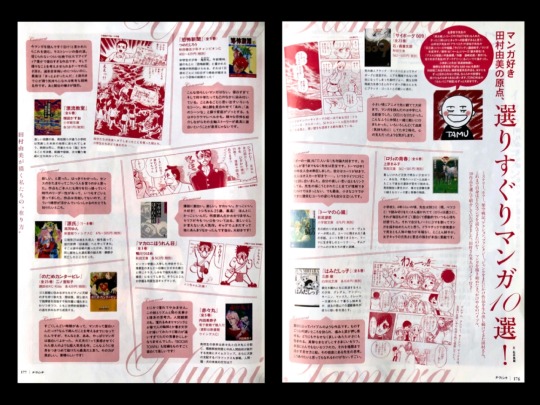
Yumi Tamura's Comments:
1. Cyborg 009 by Shotaro Ishinomori
"When I was little, I watched the anime first and loved it, and then I read the manga around the time I was entering junior high school. I wanted to be 003 and go into battle with friends in the same way. I feel like it was my emotional support during the period of my 2nd year in junior high when I was having a hard time and ran away from it all."
2. Lolly no Seishun by Kimiko Uehara
"When I was in the 3rd or 4th grade of elementary school, Uehara drew a lot of one-shots in Betsucomi ('Lolly' was a weekly comic), and they were so interesting and moving every time that I was constantly in a state of emotion. I think because of that, I began drawing manga in my notebook, splitting up the pages into panels. Dramatic & rich with emotion, the depicted characters by Uehara, whether men or women, are full of charm & utterly brilliant. The energy and willpower of the female characters is really wonderful."
3. Thomas no Shinzou by Moto Hagio
"Of course I love 'Poe no Ichizoku' & '11-nin Iru!' too. Needless to say, Hagio is the greatest treasure. When I was in the 1st year of junior high, my friend & I were crazy about 'Thomas'. I liked Juri and my friend liked Oskar... we talked about going to Germany someday. It links together my own happy memories. I'm sure I didn't understand everything Hagio was trying to draw, but in the end, even now I cry at the image of Juri smiling faintly in a small panel."
4. Hamidashikko by Jun Mihara
"To me, this work is like the bible. It relentlessly strikes the deepest part of the heart and brings forth a flood of pain and tears. It wraps you up in a warmth that's helplessly miserable, sorrowful. Sincere gazes and intense dialogues. The power of the dialogues is truly unbelievable. The way the dialogues are presented along with the drawings make the best use of that power. Mihara's careful thoughts are at the root of all this. Even though I'm already this grateful, I will never get used to it. It's just amazing."
5. Kyoufu Shinbun by Jirou Tsunoda
"This is the most terrifying manga I've ever read. It's so captivating, & even decades later, it's still ingrained in me. There are various scenes that I'll recall whenever something happens. My younger sister & I would look at each other & go like ‘it's that’ or ‘that one scene, right?!’ & it would send shivers down our spines. We're already at a level of trauma. It's uncommon for a main story line to be most interesting while introducing all sorts of horrors."
6. Hyouryuu Kyoushitsu by Kazuo Umezu
"If I was told to read a manga now that would make me cry right away, then I would choose this one. Particularly the last scene of the mother crying. This work is unbelievably fierce, grand, rich in ideas, & just too fascinating. And the themes are so broad & deep that it makes you think about many things. It's a rare transcendental masterpiece that will, in the end, leave you feeling comforted & positive, thinking ‘it was a good ending,’ even though the journey is extremely scary & painful. Also, my contempt for Sekiya is strong.”
7. Macaroni Hourensou by Tsubame Kamogawa
"This is explosively entertaining. Fun. Cute. Cool. I love it! 25-year old Toshi-chan is the best! He's so cool. I don't know how many times I've read this. I still say the lines out loud even now. This is a very popular work that I can only describe as fun. There are not many other gag manga that make me burst out laughing quite like this one. I love it!”
8. Akaaka Maru by Minako Uchida
"I just can't stop admiring this work in general. The drawings, the rhythm, the stunning midpoint [?], the ability to think in a scientific way. And the proficiency of observing people. I admired it so much that I tried drawing contours of people & handwriting with permanent markers & brushes, but my drawing skills were so different that I ended up with nothing but doodles. ‘BOOMTOWN’ & the short stories are also very interesting & fun!”
9. Genji by Yun Kouga
"Innovative, I thought. I could clearly understand it. Kouga seems to be the kind of person who has a lot of sense. I've always thought it was amazing how her work & she herself had leadership qualities of the time to pull others along. I would very much love to know what kind of ideas Kouga has in mind for the rest of this work, since it hasn't been completed yet.”
10. Nodame Cantabile by Tomoko Ninomiya
"There was a period when I was having a very tough time, & it got to the point where I was having unhealthy thoughts like, ‘Is manga even enjoyable?’ But then this work came along & I was like ‘Aah, manga is fun after all! Thank goodness, I'm okay!’ So, this is a super popular & famous work to which I owe a debt of gratitude for making me realize & genuinely feel this way. I think it would be the greatest if I could portray the world in a similar way with such thoroughness. I envy that power of Ninomiya's! It's magnificent!”
Additional side comment from Tamura (in the speech bubble):
“I wanted to include the Bijohime series (Hana no Bijohime) & PARTNER by Tomoko Naka too! (I think it's obvious that these have an influence on my characters.) Other works that also left a strong impact on me are Ryouko Yamagishi's Arabesque; Yuko Kishi's Tamasaburou series and short stories; Rising! (Saeko Himuro/Author, Kazuko Fujita/Artist); the Palm series (Yasei Kemonogi); Astro Kyuudan (Shirou Toozaki/Author, Norihiro Nakajima/Artist); & Dark Green by Junko Sasaki. Makoto Kobayashi's Judo-bu Monogatari & Nanae Haruno's PaPa told me are also excellent! There’re also many other works that I'll never forget, such as those by Shinji Wada & Udou Shinohara, which have all influenced me in some way. I've always loved TONO's Karubania Monogatari too.”

#Yumi Tamura#Tamura Yumi#Cyborg 009#Shotaro Ishinomori#Lolly no Seishun#Kimiko Uehara#Thomas no Shinzou#Moto Hagio#Hamidashikko#Jun Mihara#Kyoufu Shinbun#Jirou Tsunoda#Hyouryuu Kyoushitsu#Kazuo Umezu#Macaroni Hourensou#Tsubame Kamogawa#Akaaka Maru#Minako Uchida#Genji#Yun Kouga#Nodame Cantabile#Tomoko Ninomiya#Tomoko Naka#Ryouko Yamagishi#Yasei Kemonogi#Junko Sasaki#Makoto Kobayashi#Nanae Haruno#TONO#Shinji Wada
58 notes
·
View notes
Text
2020 Ghost Hunt Character Popularity Rankings
As I mentioned before, two magazines released in August 2020 had separate character popularity polls. Let’s take a look at the results!
Da Vinci September 2020:
1. Kazuya Shibuya/Naru (122pt)
2. Houshou Takigawa/Bou-san (89pt)
3. Mai Taniyama (85pt)
4. John Brown (66pt)
5. Osamu Yasuhara (58 pt)
6. Madoka Mori (43pt)
7. Koujo Lin (35pt)
8. Ayako Matsuzaki (27pt)
The top 3 is in line with the rankings from the Da Vinci December 2011 issue. However, the biggest change this time around is the surprise popularity of Madoka! In fact, she’s outranked Lin & Ayako and even pushed Masako out of the top rankings. ^^;
Now let’s look at the other magazine released in August...
Kai to Yuu vol. 005
1. Houshou Takigawa/Bou-san (339pt)
2. Mai Taniyama (218pt)
3. Kazuya Shibuya/Naru (213pt)
4. Osamu Yasuhara (186pt)
5. Koujo Lin (109pt)
6. John Brown (55pt)
7. Ayako Matsuzaki (48pt)
8. Masako Hara (44pt)
Wow, Monk is really popular with this magazine’s readers! o_o And I believe this is the lowest I’ve ever seen Naru rank before, lol. The editor also notes that the character ranking No. 9 is a huge spoiler, so they’ve only published up to 8 (in other words, it’s probably Gene). XD
Here’s Shiho Inada’s illustration celebrating the Top 3:

Monk: Don’t look at me like that
Mai: But I’m the protagonist~
Naru: *doesn’t really care*
(For extra fun, you can compare these results with the past Ghost Hunt Fandom Survey for English speaking fandom!)
75 notes
·
View notes